The angelica, Angelica archangelica, is a biennial aromatic plant that is fantastic in every way.
It belongs to the Apiaceae family, formerly known as Umbelliferae, in reference to their inflorescences. This family also includes carrots, fennel, chervil, and coriander. Like angelica, all these plants are used in cooking due to their strong aromatic qualities.
With its striking large, round umbels atop tall, upright stems, angelica is highly ornamental. It adds vertical interest to flower beds and attracts numerous pollinating insects, as it is an excellent food source for many foragers, including honeybees.
It is also a plant of fresh to moist environments, native to northern Europe, with countless qualities, particularly medicinal ones. Some believe these qualities inspired its name, "angelica" or "herb of the angels." It is primarily regarded as a tonic with an anise-like flavour. While all parts of the plant can be consumed, we will focus on how to harvest and store the seeds for their medicinal benefits.
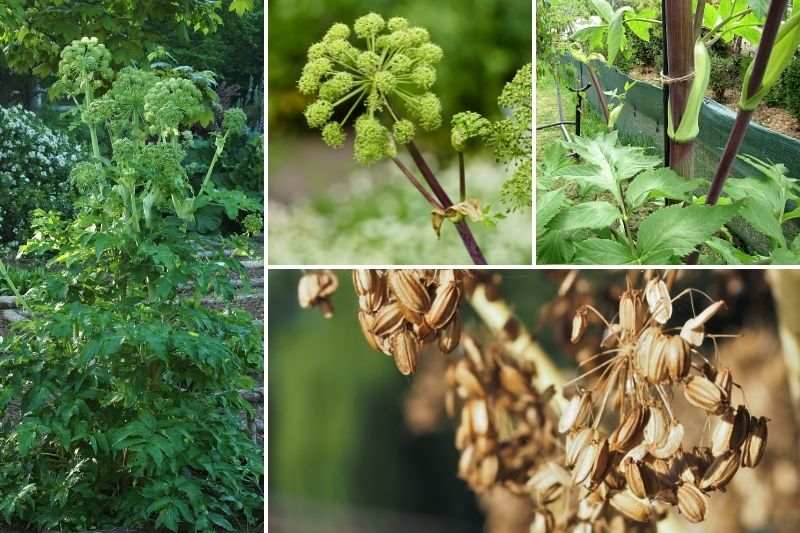
Angelica archangelica (photo sources: stems FarceRéjeane Wikipedia / seeds Agnieszka Kwiecien Wikimedia)
When and how to harvest angelica seeds?
As a biennial plant, angelica's development cycle spans two years. In the first year, the plant consists only of leaves. The flowers will appear in June and July of the second year. Consequently, you must wait until late summer of the second year to harvest the seeds.
The seeds should be collected once they have fully matured on the plant, meaning when they begin to dry on the stem, around late August.
For harvesting, choose partially dried umbels. Also, pick a day when the air is dry to facilitate indoor drying and prevent mould growth.
Cut the large umbels and place them directly on a tray to allow the seeds to finish drying in a dark, dry place. A tray is the most suitable tool for drying (and harvesting, if you're close to your home), as the small, partially dried seeds will fall off easily and could get stuck in a basket.
Angelica seeds retain their properties for only a very limited time. Therefore, it is advisable to freeze your harvest as soon as drying is complete to preserve the plant's medicinal qualities for as long as possible. For this, you can place them in several small paper bags before freezing, taking out only one bag at a time shortly before use.
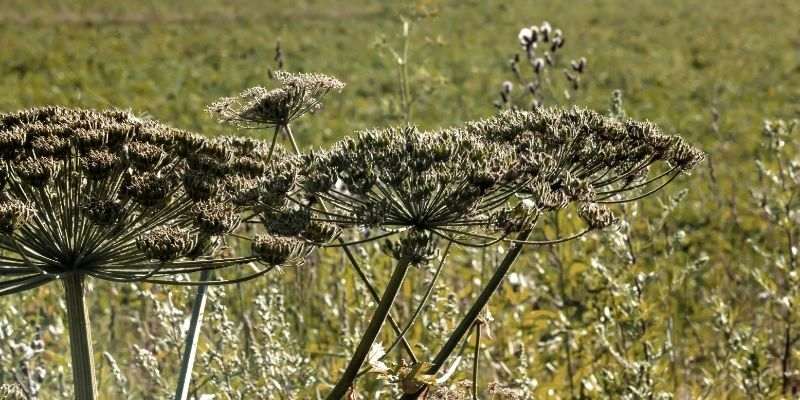
Dried flowers of Angelica archangelica
Benefits and uses
Indications
Angelica has long been recognised for its medicinal properties. The Romans and Greeks used it in antiquity.
While angelica leaves can be used in cooking, particularly in soups, in herbal medicine, it is the roots and seeds—and sometimes the stems—that are utilised.
During the Middle Ages, its root was reputed to protect against the plague during epidemics.
Today, we will explore its indications, particularly concerning the seeds.
Traditionally, angelica is primarily used to alleviate digestive ailments. It is said to stimulate appetite and act as a stomachic, meaning it aids stomach digestion. It may also relieve digestive discomforts such as flatulence and bloating, among others.
It is also believed to have a calming effect, reducing pain from colic and other intestinal spasms.
It is also used for respiratory issues, such as soothing coughs and bronchitis.
Additionally, while angelica has a calming effect on the nerves, it is thought to be stimulating during convalescence, making it a useful plant for combating fatigue.
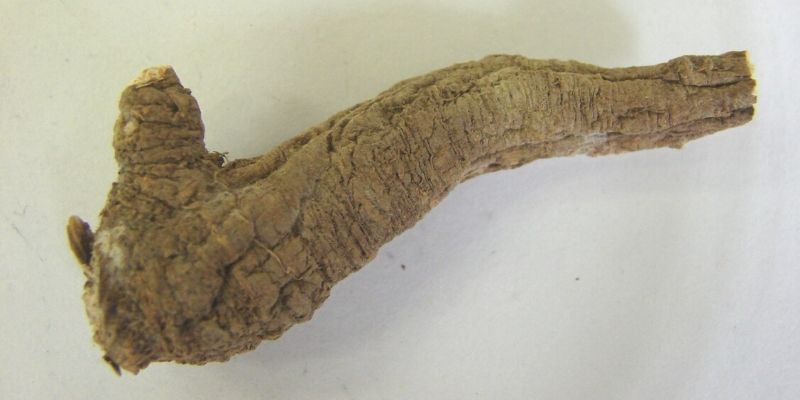
Angelica officinalis root (photo source Maša Sinreih - Wikimedia)
Uses
Herbal tea
The seeds are typically used in infusions, at a rate of 1.5 g per 250 ml cup, or about one teaspoon. Pour boiling water over the seeds, cover, and steep for about ten minutes before straining. Do not add sugar to the drink. This tea can be consumed one to three times a day, either before or after meals. For more details, consult a healthcare professional.
Angelica wine
The seeds are also used in traditional digestive liqueurs, such as Vespetrò from the Italian Alps.
You can make angelica wine with digestive properties by macerating 50 g of seeds in 1 litre of white wine for three days. Drink in moderation, of course!
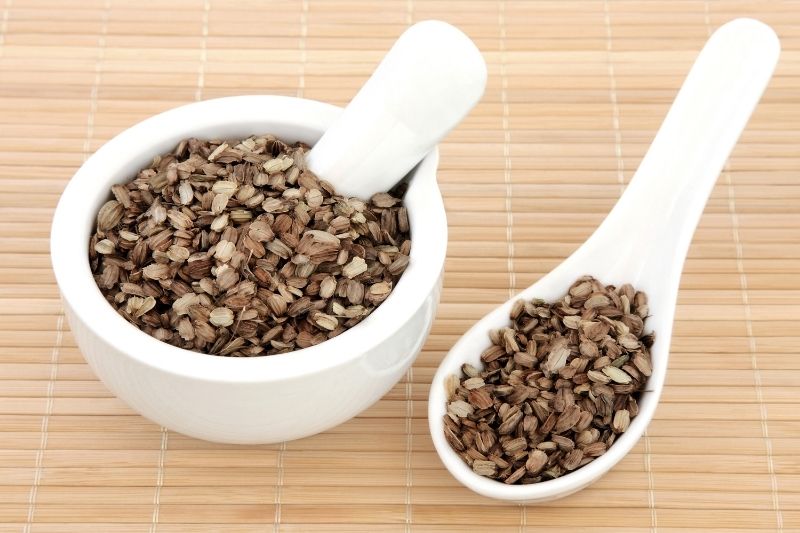
Contraindications and warnings
That said, precautions are necessary to ensure a positive experience. Given its potential abortifacient effects, it should be avoided during pregnancy. However, it is safe to use while breastfeeding. In fact, it is one of the galactogenic plants (those that promote lactation) found in teas designed for this purpose.
Among the active compounds in angelica are furocoumarins, which are photosensitising—meaning they can cause an allergic reaction to light. Fortunately, these compounds are poorly soluble in water, so they are rarely present in infusions. The risk of photosensitivity is low but exists. Avoid prolonged sun exposure immediately after consuming angelica.
Be cautious if you are unsure whether you are dealing with an angelica plant. There is a risk of confusion with wild angelica—which is not too serious, as it is potentially edible and has similar therapeutic properties. However, confusing it with water hemlock (Cicuta virosa) would, as expected, be fatal. Be very vigilant!
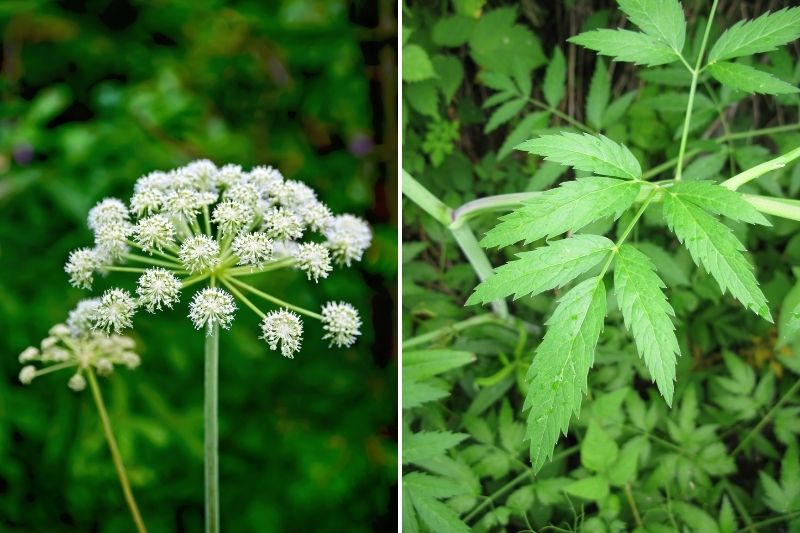
Flowers and leaves of water hemlock (photo source on the right: Qwert1234 - Wikimedia)
































Comments